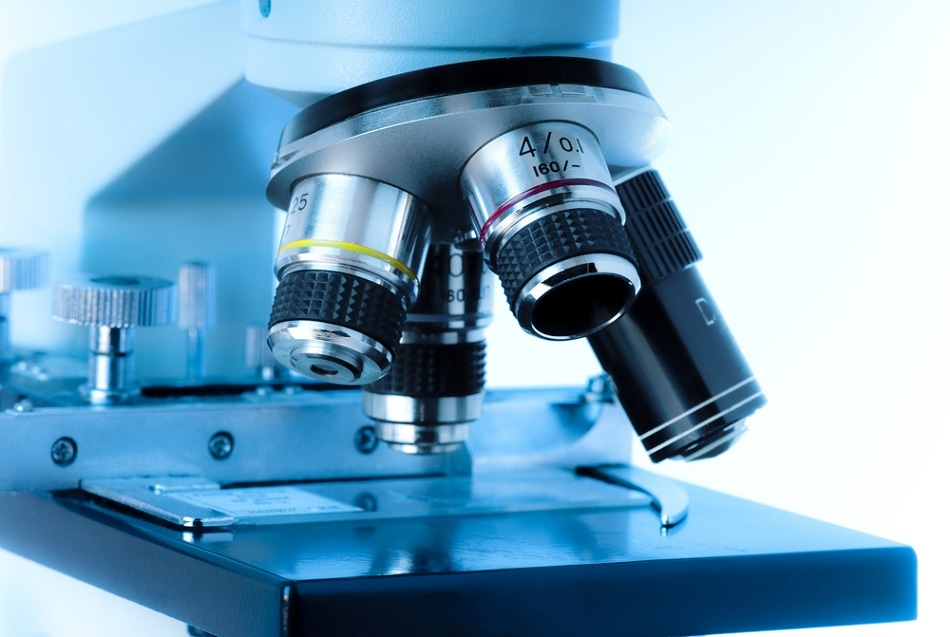Aug 15 2016
 Image Credit: Brian Maudsley/Shutterstock.com
Image Credit: Brian Maudsley/Shutterstock.com
A team of researchers from Iowa State University’s department of physics and astronomy are focusing on constructing a strong instrument that has the potential to explore and tune materials in various ways, to help to solve the global energy, information processing, and data storage requirements.
The instrument proposed by the researchers is an extreme quantum terahertz nanoscope, whose key function is to identify material functions and materials at unprecedented scales of time, space and energy, thus helping studies at scales that are ultrasmall, ultrafast, and at extremely low frequency.
We want to develop a microscope that doesn’t exist yet. We’re trying to see new things by looking across these three dimensions simultaneously. We want to understand how the electrons move and communicate in order to produce fascinating properties of materials. All of this will create a new paradigm to understand materials, control their properties and have far-reaching consequences to promote science and future technology.
Jigang Wang, Associate Professor, Iowa State University
The W.M. Keck Foundation of Los Angeles was recently awarded a three-year, $1.3 million grant to support the commissioning, construction, and primary usage of the nanoscope. The W.M. Keck Foundation of Los Angeles is one of the philanthropic organizations in the country. The project will be called the W.M. Keck Initiative in Ultrafast Quantum Microscopy of Emergent Orders.
Iowa also extends its support to the project through funds from the department of physics and astronomy, the College of Liberal Arts and Sciences and the Vice President for Research. The Ames Laboratory also supports the project by providing specialized laboratory space in the new Sensitive Instrument Facility constructed in the laboratory.
The grant was authorized through the Iowa State University Foundation, which is a nonprofit, private corporation focused on managing and securing grants and gifts that benefit Iowa State.
A Diverse Team and Extreme Scales
Wang stated that the quantum nanoscope project was successfully executed by the technical and expertise resources and intense collaboration of scientists from Iowa State and Ames Laboratory.
The team includes Paul C. Canfield, an Iowa State Distinguished Professor of physics and astronomy and an Ames Laboratory senior physicist, who has expertise in new materials design and discovery; Zhe Fei, an Iowa State assistant professor of physics and astronomy and an Ames Laboratory associate, who has expertise in scanning near-field optical microscopy.
Also included was, Thomas Koschny, an Ames Laboratory associate scientist, who has expertise in plasmonics, the study of light waves and metal surfaces, and metamaterials, materials with properties not found in nature; Costas Soukoulis, an Iowa State Distinguished Professor of physics and astronomy and an Ames Laboratory senior physicist; and Wang who has expertise in ultra-fast optics and terahertz spectroscopy of complex materials.
Wang further highlighted that the team will collaborate to create a nanoscope capable of gathering data at three extreme scales: thousandths of electron volts in energy (milli-electron volts or terahertz), quadrillionths of a second in time (femtoseconds) and billionths of a meter in space (nanometers).
Each of the three dimensions, energy, time, and space, depict a triangle’s side according to Wang.
On each side of that triangle humanity has achieved tremendous progress and understanding. But what about the region on the inside of the triangle, this inaccessible region that combines the best of all three fields? For many outstanding scientific and technological problems, our answers are largely limited by our inability to see inside this region. Through this award from the Keck Foundation, this instrument we’re building will break down the barriers and allow us to see what’s there.
Jigang Wang, Associate Professor, Iowa State University
The assembling of the instrument’s superconducting magnet, ultrafast lasers, scanning near field microscopy probes and other such components results in commissioning of the nanoscope by studying graphene, a thin layer of carbon atoms packed in a honeycomb.
The primary experiments performed by the instrument will analyze a high-temperature, iron-based superconductor, which refers to a material capable of conducting electricity with no resistance and supporting unique magnetic properties when cooling in a manner different from standard metals.
The team will also carry out experiments using the nanoscope to control electrons in order to adjust materials with minimal heating of the samples. Study goals cover identifying new states of matter and determining the smallest lengths and shortest times for these states to switch.
The team wrote that they anticipate the nanoscope and its measurements to “reveal the secrets of emergent-order phenomena and manipulate them at will, a monumental challenge in this age of novel materials.”